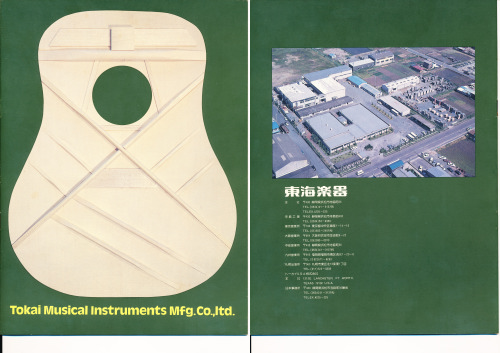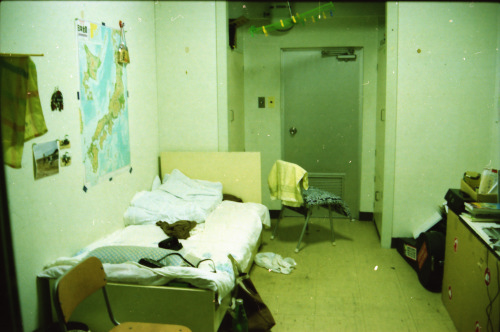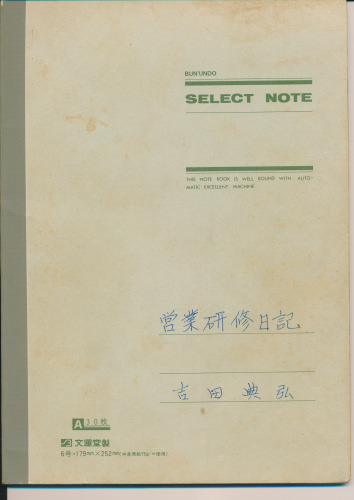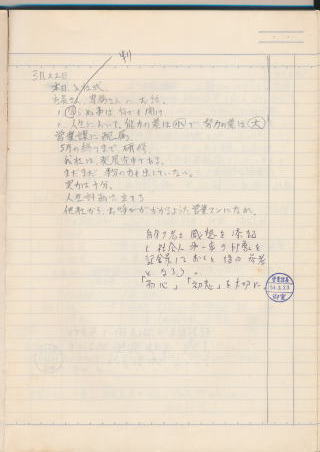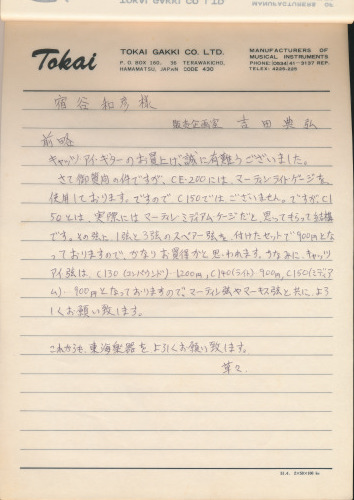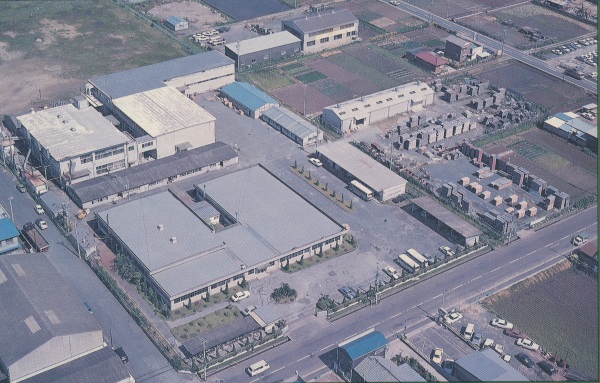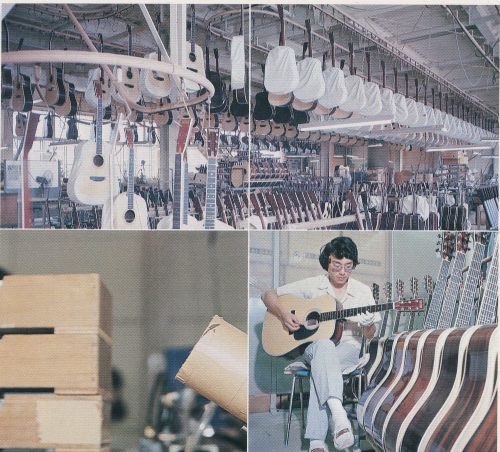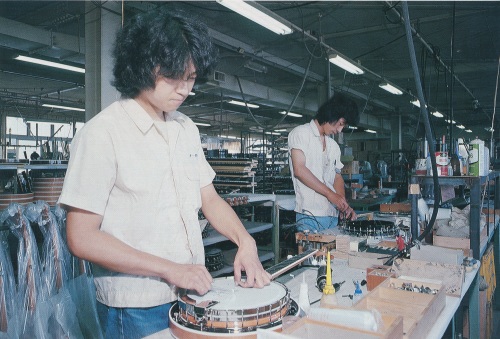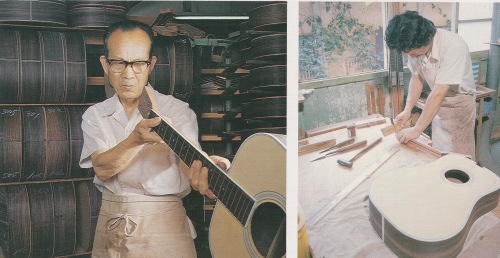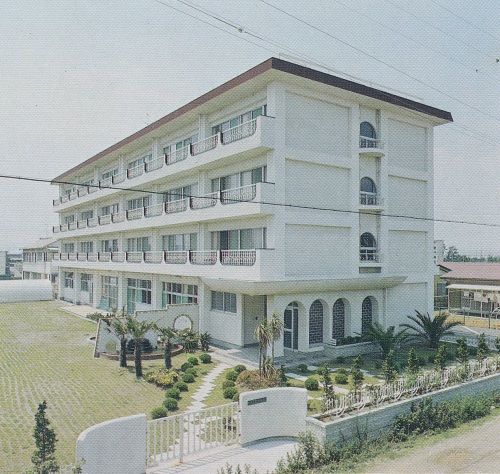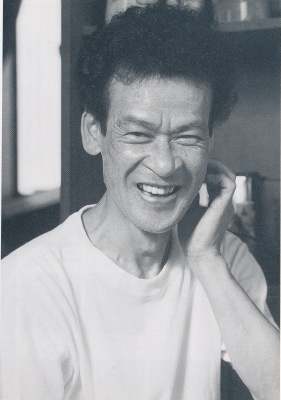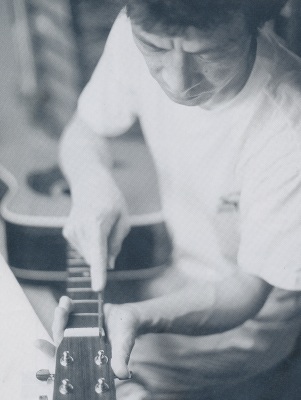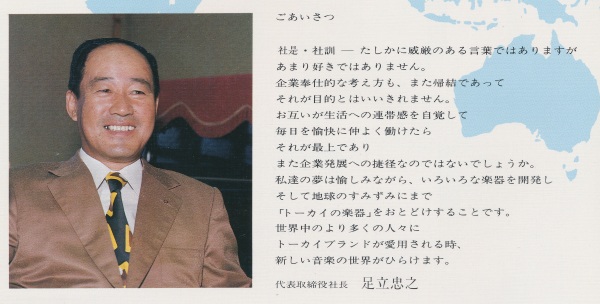http://fridays-dream.com/toukaigakki3.html
Tokai Musical Instruments Manufacturing Co., Ltd. 3
I was working for "Tokai Musical Instrument Manufacturing Co., Ltd." in Hamamatsu City, Shizuoka Prefecture. I was a member of the company until the end of 1984, and it was certainly a very interesting company! However, since there were many musical instruments that were mainly produced using "wood" as a raw material, it is certain that there was always a risk of being fundamentally "unprofitable".
It's true that when I joined the company for about 2 or 3 months, I thought, "Is this really not possible?" Even young people who entered after graduating from high school understood this. Why? Instruments that use wood (especially instruments that emphasize wood grain) are limited in the materials that can be used . In particular, for manufacturers that mass produce to a certain extent, they do not do inefficient things such as purchasing the front plate one by one.
Naturally, by purchasing in bulk, the cost of purchases can be lowered, but then, as a matter of course, there will be materials that cannot be used. For example, "the wood grain is not beautiful" or "the wood grain is beautiful, but it has a seam". I'm going to have a good time. In addition, the material used for the table board is basically "straight grain" board, but "straight grain board" is called "quarter sawn" in English, and only one quarter can be taken from the log. It's the material. It also means that three-fourths of the log will be wasted. And since wood is a "living material" even after it is felled, it may become In this way, it can be said that wood products such as guitars are destined to be prone to "waste" during the process from raw materials to finished products. If this is an individual production of about 10 or so a year, it is possible to examine and purchase the materials for each piece and produce it without waste. It will go away.
Due to these circumstances, the size of the Tokai Musical Instruments company was incomplete. It might have been better if it had a small number of people like "Yairi Guitar", but
it is a medium-sized company with about 400 employees? Was it? Limbo? I think it was.
However, the president at the time,
Mr. Tadayuki Adachi, was well aware of the situation. And he had some very interesting ideas. I belonged to the sales department, so I may have had more opportunities to meet him than regular employees, but I always thought he was a very unique person.
On the face of it, Managing Director
Toshio Oba seemed to be in charge of everything, but in reality, I think President Adachi was leading Tokai Gakki.
|
This is Mr. Tadayuki Adachi, the president at the time .
During the Pacific War,
did you go to mainland China with Managing Director Oba
and play various pranks? I heard
a lot of fun stories !
|
What kind of unique ideas did you have? (There are a lot of things that are taken for granted, but...) "Salespeople tell us to make easy-to-sell products, but what can we do? If it's a product that sells, we need a salesperson." What if you say that? (It's the Enshu dialect. Everyone at the head office speaks the Enshu dialect, right?) That was a reasonable opinion!
"Even if you say that handmade is good, you say that handmade is good, why do you have to carve everything by hand from a log?" Why don't you just do the last important part by hand? Until then, did you do it with a machine...?
Is it the first time in the industry that it was introduced by saying,
"Computer-controlled three-dimensional NC router". With the introduction of this machine, it became possible to produce electric guitar bodies with overwhelming speed and accuracy.
"If there is a lot of waste in using wood... why do you use wood?" There's no law against using anything other than wood to make a guitar ! '
Well, if it doesn't produce a good sound because it has different characteristics from wood, why not develop a material that has the same characteristics as wood and produces a good sound? If that's the case, can't you just throw away all the waste?
With this in mind, we developed the "
Talbo" electric guitar with an aluminum alloy body, and the
"MAT" series of electric guitars made from carbon materials. bottom. The "MAT" was launched with a wooden neck, but later developed into an all-carbon guitar with a carbon neck.
These revolutionary guitars... didn't sell at all?
Did users not keep up with this revolutionary idea? It seemed (Later, it was reviewed and the evaluation seemed to have risen...) However, since those technologies were developed and commercialized, I think that the latent ability of Tokai Musical Instruments was still very high.
This kind of thinking was also used in "Piano". The mechanism that produces the sound of a piano is called an "action". In the case of , "crazy" and defective parts are likely to appear, and many parts must be manufactured one by one.
"Then make one out of plastic!" So I introduced a plastic action, but the world of pianos is far more "conservative" than the world of guitars, so sales were very difficult.
Well, these capital investments and development costs (especially capital investments for piano production) put pressure on cash flow, and the
appreciation of the yen was the main factor. It seems to be said.
In particular, we often heard that the impact of the appreciation of the yen was large for those of us in the sales department. Tokai musical instruments at that time
It seems that there was also a considerable profit from exports. I remember the Trade Department often saying, "If the dollar goes up to 170 yen, we can do our best, but if it goes below that, it's impossible!"
This is what I saw as an insider of the company situation at the time when Tokai Gakki applied for a peace settlement.
Of course, I was the most "low-ranking" employee, so I don't think it's a certainty...







